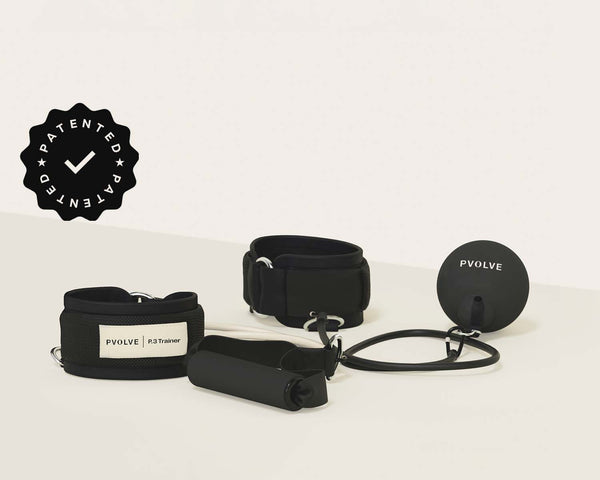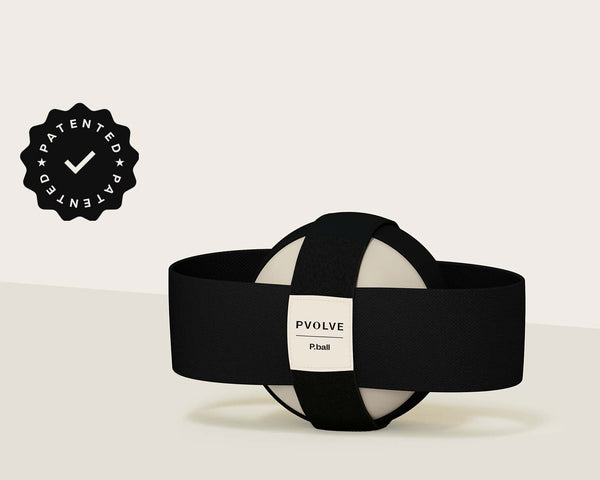We’re proud to have Amy Hoover on board as Pvolve’s Doctor of Physical Therapy, where she’s able to consult the entire community about the method and how it impacts the body. In our Ask Amy series, she answers your questions first hand so you can get the most out of your work with Pvolve.
One of the most unique parts of our workouts is that they’ll keep you safe from injury and free of pain. Every low-impact rep properly engages muscles and minimizes next-day soreness, joint tension and other pain points often associated with exercise.
But what about when you start with preexisting pain? Does extra movement help, or hurt? This week, our resident physical therapist Dr. Amy Hoover explains a common pain-related disorder, fibromyalgia, and how the Pvolve method can help diminish pain and be a source of regular, consistent workouts.
What is fibromyalgia and what effects does it have on the body?
According to the CDC, fibromyalgia is a disorder where one experiences widespread body pain, fatigue, sleep problems and emotional distress. The cause is unknown. This disorder was once diagnosed by checking 18 different points on the body for muscle pain or tenderness, also called trigger points. More recently, the diagnosis can be made through patient history, bloodwork and exam. It is thought to be associated with other autoimmune disorders such as lupus or rheumatoid arthritis, but not always.
How can exercise help those with fibromyalgia?
Exercise is an important part of managing the symptoms of fibromyalgia. Many people affected by fibromyalgia can fall into the fear-avoidance loop—they fear exercise will cause more pain, so they avoid moving altogether. However, if one has chronic pain or whole-body pain, regular movement is essential for maintaining mobility and the ability to perform normal daily functions. If we want to be able to move, we must move!
Specifically for this condition, low impact, resistance-based, mindful exercise is recommended to help improve blood flow to the muscles, improve strength and flexibility and eventually relieve some of the pain associated with fibromyalgia. The Pvolve method is a great option for those with this condition as it offers a wide range of beginner to advanced workouts, both short and long duration, and can always be modified without equipment when needed.
Are there any negative impacts of exercise for those with fibromyalgia?
Starting an exercise program when you have fibromyalgia can be very challenging and frustrating. It may worsen pain at first because your body is not used to it. You want to be mindful of listening to your body but also “nudge the pain” a little bit. Note your pain on a scale of 0 (none) to 10 (worst pain) and stay below 4 out of 10 or take frequent rests. With fibromyalgia, specifically, starting with very short periods of exercise is recommended, about 5-10 minutes a day.
What might be some good workouts or movements to get started?
Pvolve offers many options for people suffering from fibromyalgia. I would recommend starting with a few of the method tutorials on foundational moves, which are only a few minutes long each. When you can do these, try a beginner workout with no equipment. Press pause as needed. Try to increase the amount of time you exercise by a few minutes each week. You can also try a series such as the 8 Day Foundation Series to start. As you feel better and are able to exercise longer, you can add resistance such as the p.ball, light ankle band or hand weights for more of a challenge.
What modifications can be made, if needed?
As mentioned above, you can always press pause, go slower or even do half of the workout. All Pvolve workouts can be done without equipment. You can also reduce the range of motion of movements for modification.
How effective is recovery for those with fibromyalgia?
Recovery days are important and a great option between more active days, or even as a place to start if you have fibromyalgia. These workouts focus on stretching and lengthening the body to help ease our functional movements throughout our day and counteract long periods of inactivity where our muscles can tighten up and shorten. Try our 10-Minute Upper Body Release or Summit Boost: Recovery Stretch which are both short but effective in easing muscle tension.
Not a member yet? Start your free trial here for access to these programs and recovery videos. Or, see here for more on recovery from Dr. Amy.

We are proud to announce Amy as Pvolve’s Doctor of Physical Therapy, consulting the entire community about their work with our method. She’ll be continually providing feedback and answering important questions for the Pvolve community, so keep an eye out for her advice on the blog. Feel free to email community@pvolve.com for topics you’d like Amy to cover!






































